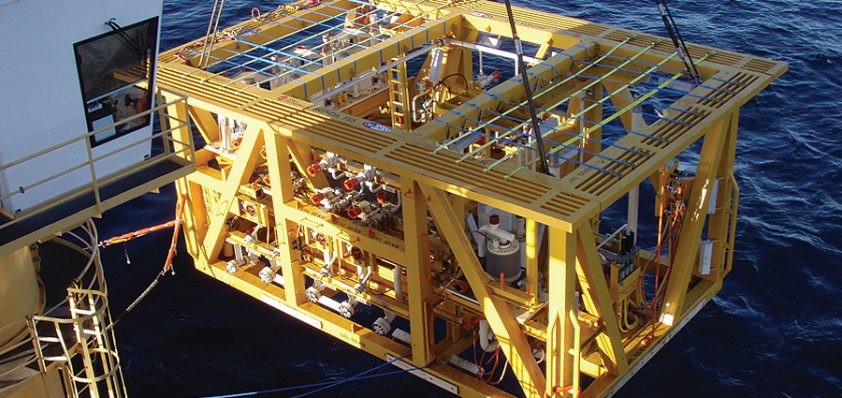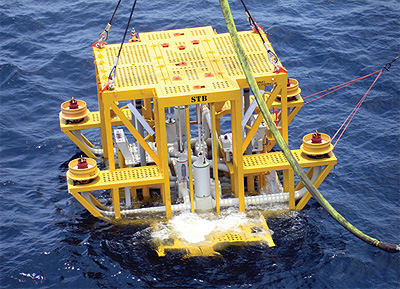
Framo Engineering: Pioneering Enhanced Recovery Systems & Subsea Technology
Boosting production
Framo Engineering was established in 1983 with the main aim of being a systems supplier of enhanced recovery products.
The key objectives of these products were to reduce cost, enhance recovery and the tie-in of marginal satellite fields, and improve long-distance tiebacks and deepwater developments.
 Today the company maintains its initial strategy, and the Framo Engineering name is synonymous with enhanced recovery and marine system technology, including subsea pumps, pump controls, multiphase and wet gas flow meters, compact manifold, swivel stack systems, fluid transfer systems and providing the technical solutions that meet the market needs and offer ‘best in class’ technologies. Its focus is to work closely with its clients for the whole field life of a product, from the concept phase to project execution and after-market support; assisting in optimising their interests.
Today the company maintains its initial strategy, and the Framo Engineering name is synonymous with enhanced recovery and marine system technology, including subsea pumps, pump controls, multiphase and wet gas flow meters, compact manifold, swivel stack systems, fluid transfer systems and providing the technical solutions that meet the market needs and offer ‘best in class’ technologies. Its focus is to work closely with its clients for the whole field life of a product, from the concept phase to project execution and after-market support; assisting in optimising their interests.
Framo Engineering is reaping the rewards of its strategy and has considerable core experience in-house, which has made a vast difference in the company continuously leading the way in the hard technology arena. This is particularly evident with its boosting technology systems. The company has delivered 25 systems worldwide and has accumulated in excess of 900,000 operational hours of experience in this area. It is these key elements that have put Framo at the frontier of turnkey boosting systems, with the company taking total responsibility for the topside associated equipment, umbilicals and the subsea scope. Today the business provides turnkey boosting system solutions capable of delivering up to 300bar differential pressure as well as systems that boost with 100 per cent gas.
Seabed boosting offers an alternative or complementary system to other artificial lift techniques and a range of advantages in production and field flexibility. The helical-axial design is the core technology adopted that best suits all process fluid operations as well as the typical operational challenges of slugging, emulsions sand, low and high. Today, Framo has developed this as a well-proven core technique to meet market demands. It offers a range of pump systems for single phase (centrifugal design), multiphase (helico-axial), hybrid/high boost (combining these core technologies) pumps, and multiphase compression (optimising centrifugal technology in a counter rotating method – a ‘true’ wet gas compressor with no separation required).
Producing boosting systems is not just about having in-depth pump knowledge; but also about having the system engineering and experience for the total system scope, as well as understanding the operational process regimes from start-up and continuous flow, through to managing operational upsets, such as emergency shutdowns and the process dynamics. This is why Framo  Engineering prides itself on having this kind of system knowledge in-house, and combines this with working closely with an operator by performing dynamic process simulation modelling at the concept stage.
Engineering prides itself on having this kind of system knowledge in-house, and combines this with working closely with an operator by performing dynamic process simulation modelling at the concept stage.
In this area the devil is in the detail. Third parties may have the expertise in certain systems, but the detail in the core technology and an in-depth knowledge of the whole operational system lies with the pump system supplier. This extends well beyond just the process fluid dynamics simulation, and into the controls, umbilicals, power systems and understanding rotating dynamic machinery. A key example of this is in power systems, where engineering of the power systems and the umbilical architecture is the key to appreciating the system as early as possible. This is particularly true in the field of long distance tie-backs. Today Framo has already qualified systems that go well beyond 50 kilometres, but is focussed on extending beyond this to meet the industry needs of up to 200 kilometres. However, this obviously has its own challenges that need to be considered, right down to the component connector level.
Subsea technology is not just about designing a robust system, as consideration must also be given to installation. A typical Framo pump system is designed in a standardised, modular approach for intervention and connection operations. Critical components are designed to minimise weight and offer total flexibility, thereby reducing intervention. This is evident in the installation of a manifold system from a light intervention vessel, a pump unit weighing approximately 20 tonnes and operations with a very simple intervention tool.
Such high levels of engagement have contributed to Framo delivering 25 systems worldwide, and mean that the company is recognised as much more than a systems supplier. Framo Engineering’s commitment to its clients continues far beyond system delivery. The company continues to work closely in supporting the system through its entire field life after commissioning, which enables the operator to manage their production, and Framo to assist in optimising the system. This is achieved by use of the company’s remote conditioning monitoring system – FRIEND (Framo Interactive ENabling Diagnostics).
Most recently Framo and StatoilHydro have signed a contract for the Framo wet gas compression (WGC) system, which will be used to maintain the plateau production on the Gullfaks ‘C’ site far beyond 2013. The company has extensively developed the WGC over the last 22 years by using a unique approach to compression that involves counter-rotating shafts. This approach offers the opportunity to perform true wet gas compression, without the burden of any separation.
Framo Engineering
Products: Recovery products